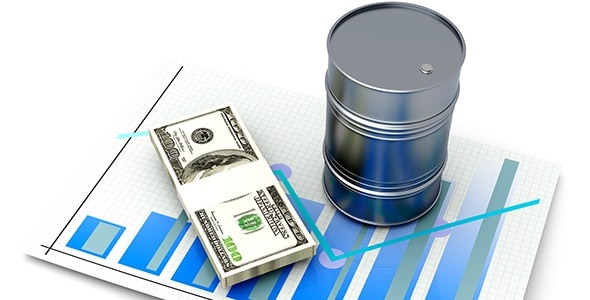Oil’s prolonged slump is leaving some major oil powers, such as Saudi Arabia, nursing huge budget deficits. Some major producers are pumping at high levels to retain market share. However, a recent shift in sentiment after a number of countries agreed to freeze output has given a boost to prices.
The oil price has recovered strongly from the low of $27 a barrel reached on February 11 and is now trading above $40 a barrel.
OPEC and non-OPEC producers will hold a meeting in Doha, Qatar on April 17 to discuss freezing output or possibly even cutting output to boost prices that are still well below half the levels of 2014. Around 15 suppliers making up close to three-quarters of global output are signed up to the initiative.
Oil stockpiles are at record highs and some are worried that the recent sharp rise in the price defies fundamentals.
Domestic oil stockpiles in the US and around the world are at record highs and continue to weigh on sentiment. The OECD believes that global reserves will rise from last year’s 3 billion barrels to 3.24 billion in 2016 and then to 3.3 billion barrels by the end of 2017.
Saudi Arabia’s production remains near its record monthly high of 10.2 million barrels and US output is above nine million barrels a day.
Given that US production is extremely resilient, Saudi Arabia and Russia are pledging only to limit pumping to near record highs above ten million barrels a day and Iran is planning a four-fold increase on January’s one million barrels a day.
Shale oil production in particular has proven much more resilient to the price fall than many had expected. Also, if prices rise strongly, they could encourage more shale producers to come back to the market.
According to the International Energy Agency (IEA) the recent rise in oil prices is a “false dawn” and the over-supply of crude is set to worsen. The IEA expects oil stocks to grow by two million barrels a day in the first quarter and 1.5 million barrels a day in the following three months.
Demand for oil is expected to weaken. The IEA forecasts that demand growth will fall to 1.2 million barrels a day this year, from the 1.6 million barrels a day seen in 2015.
However, last week the industry was given a boost from the UK Budget, the US Federal Reserve and fresh optimism on a supply deal.
News from George Osborne that the UK is easing taxes on the North Sea oil industry gave a boost to producers. The chancellor halved a supplementary charge levied on offshore fields and abolished a 30 percent petroleum revenue tax.
The US Federal Reserve announced its latest monetary policy decision revealing that it expects far fewer interest rate rises this year than were previously expected in December. This has resulted in weakness in the US dollar and gives a boost to oil prices.
The outages in Iraq, Nigeria and the United Arab Emirates took 350,000 barrels a day off the market in February. Global oil supplies eased 180,000 barrels last month - and exports from high-cost exploration areas such as the US and South America could fall more sharply than expected this year.
The oil price has stabilised after a month-long rally, as a conflicting analysis of the market puts a ceiling on further gains it seems.
Some optimists on the oil price include Oman’s Minister of Oil and Gas, Dr Mohammed bin Hamad Al Rumhy who has said that oil prices may recover 25 percent by the end of the year. For this to happen, oil producers will have to agree or reach an understanding on freezing production before the proposed meeting on April 17.
The market needs an output cut and not a freeze to continue the recovery in oil prices. At current production, the world is oversupplied by 1.5 to 2 million barrels a day. However, with less interest rate rises forecast in the US, this should provide some support for oil prices. The US Federal Reserve now forecasts two rate increases this year instead of an earlier estimate for four.






















